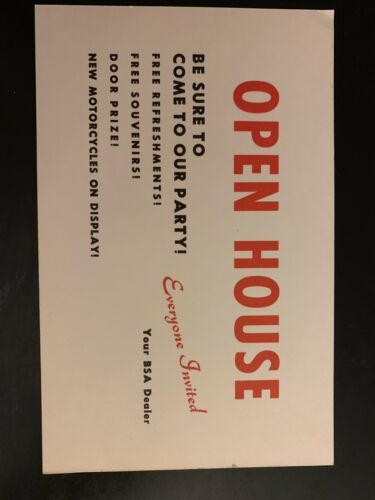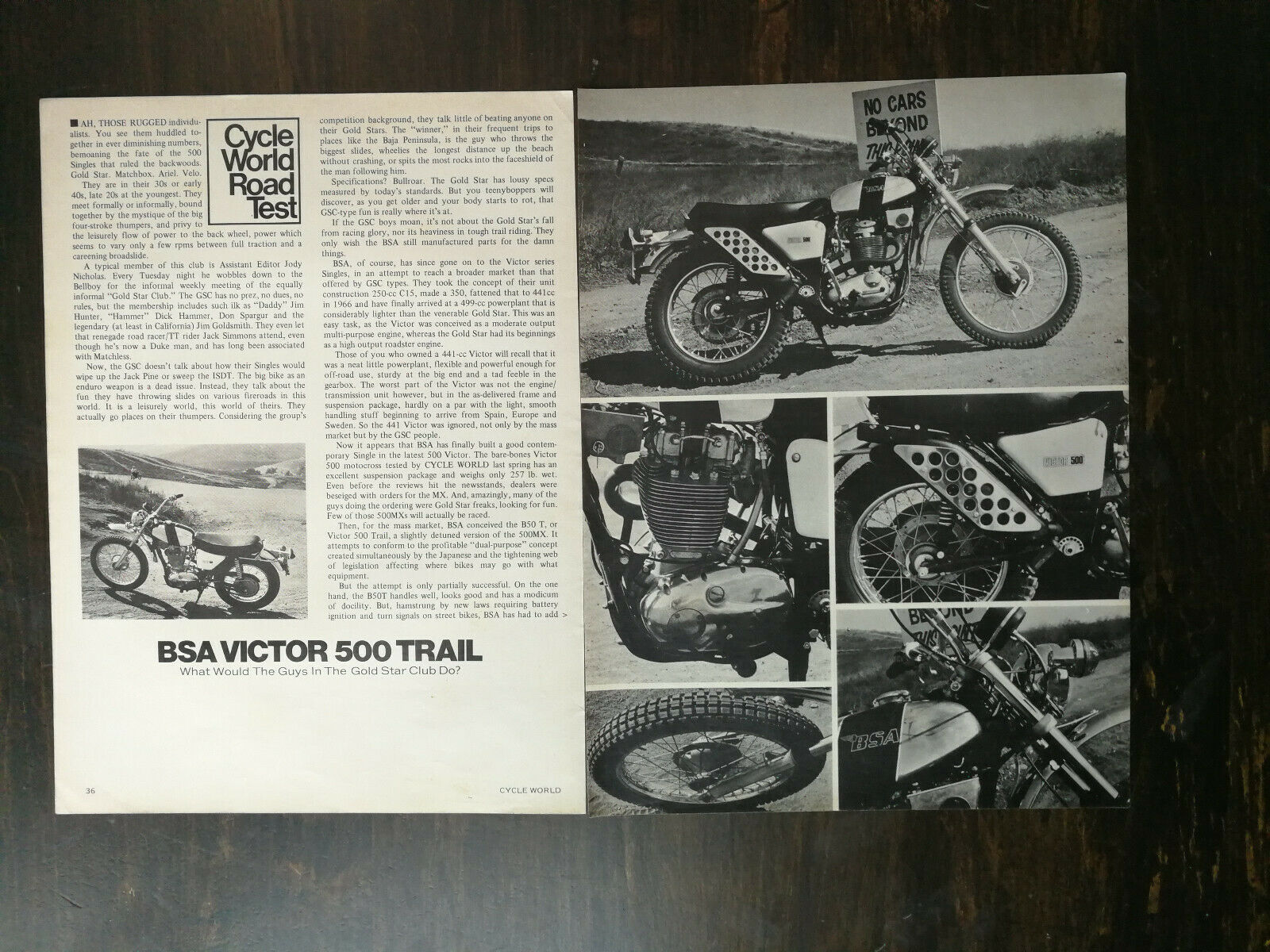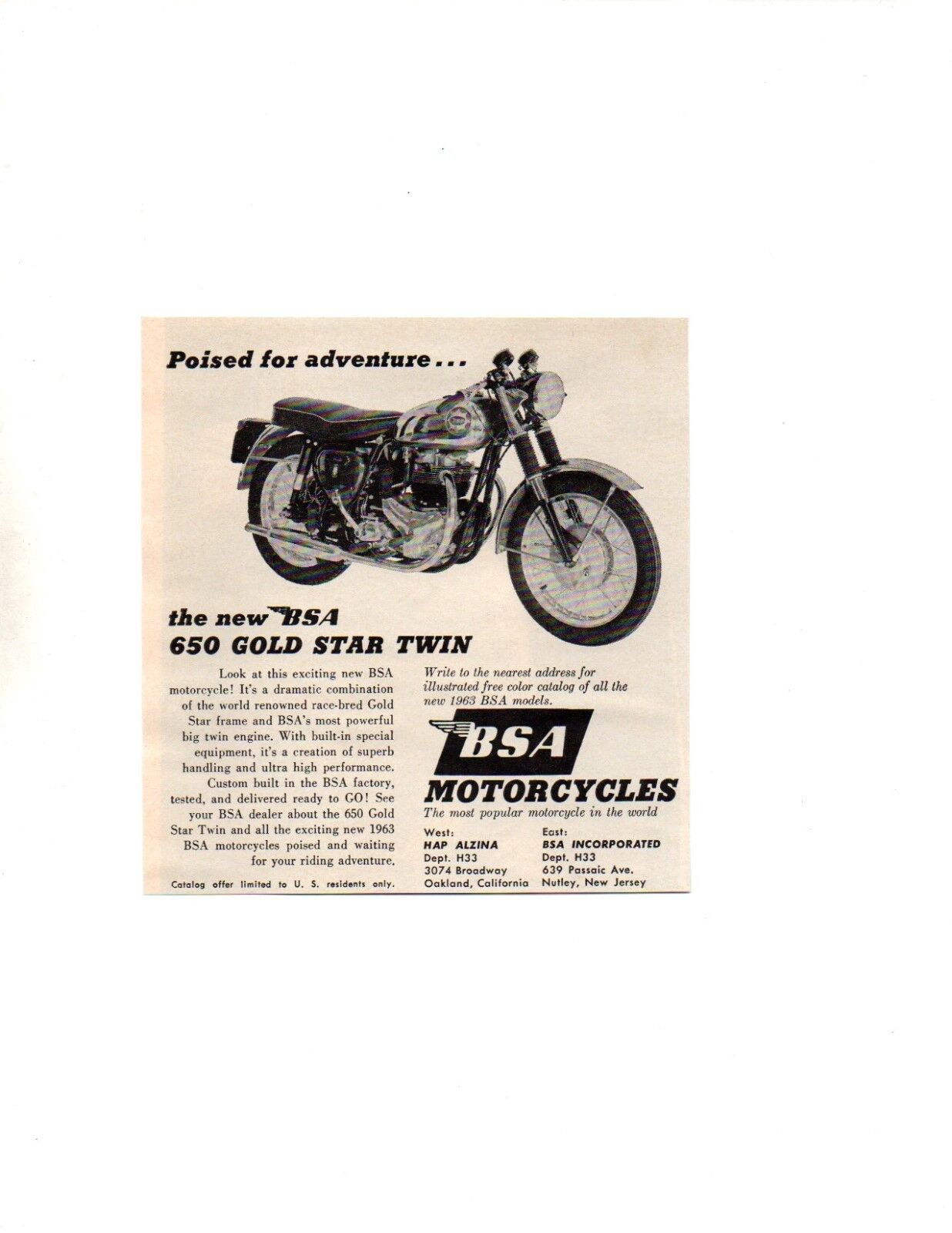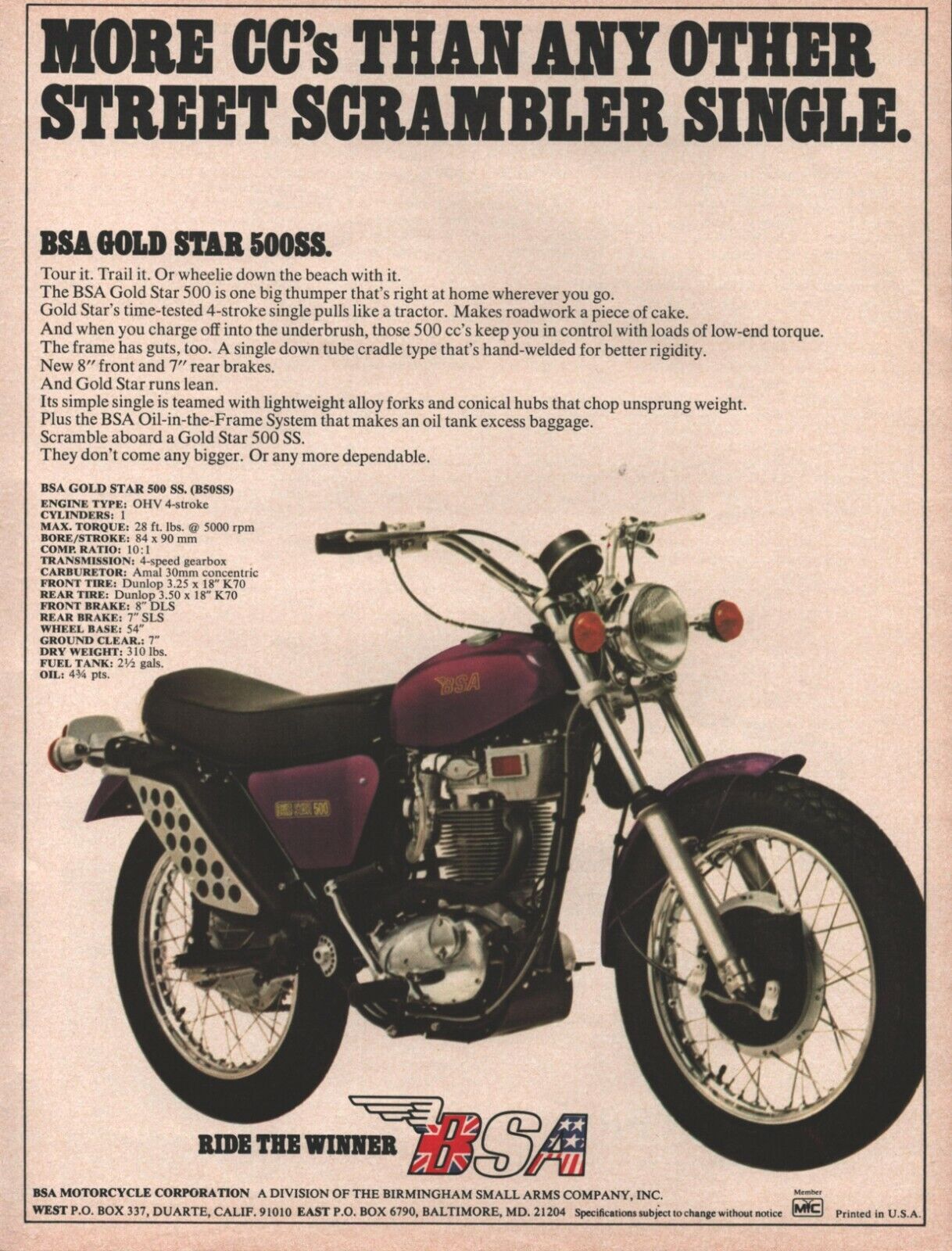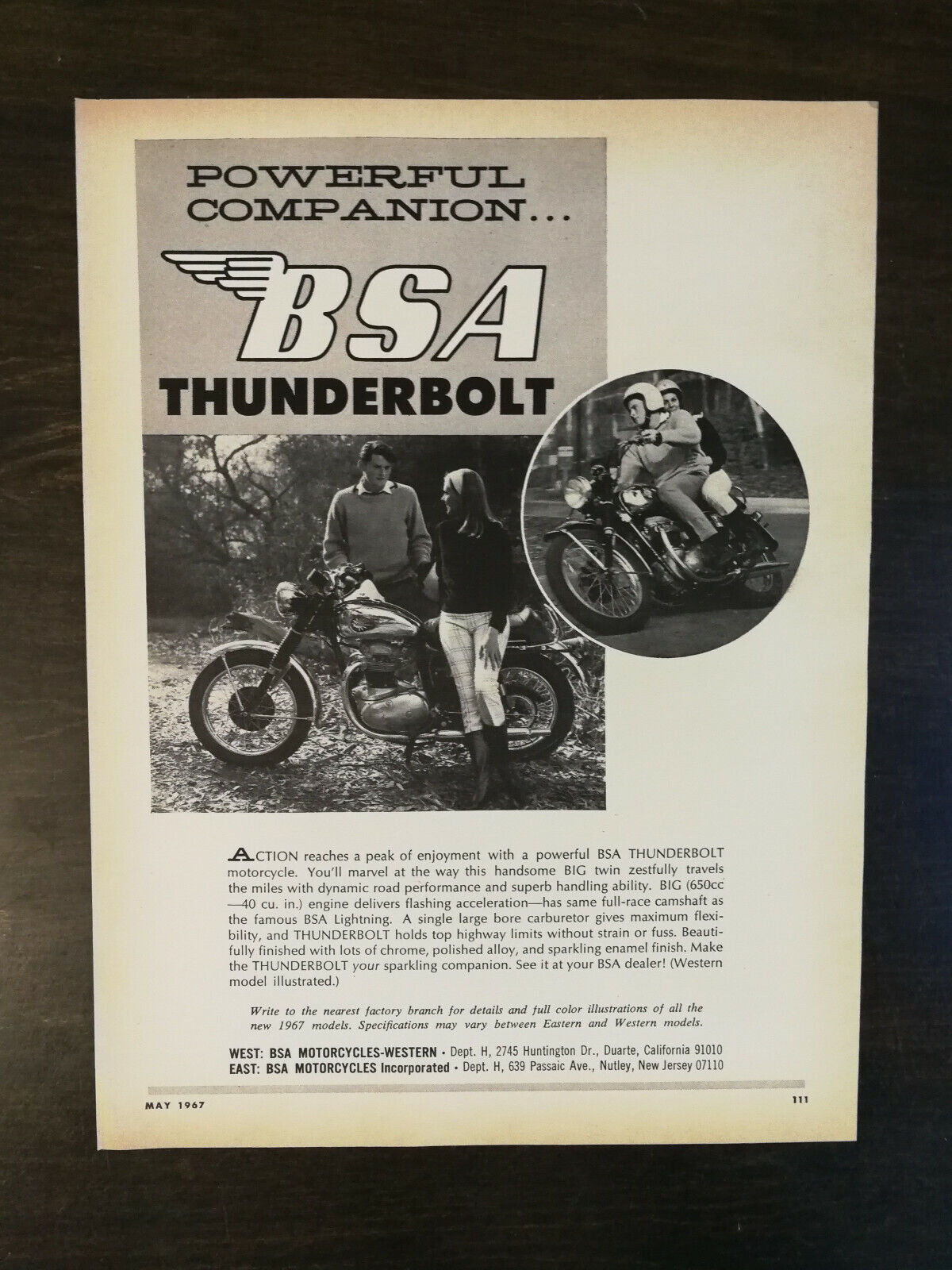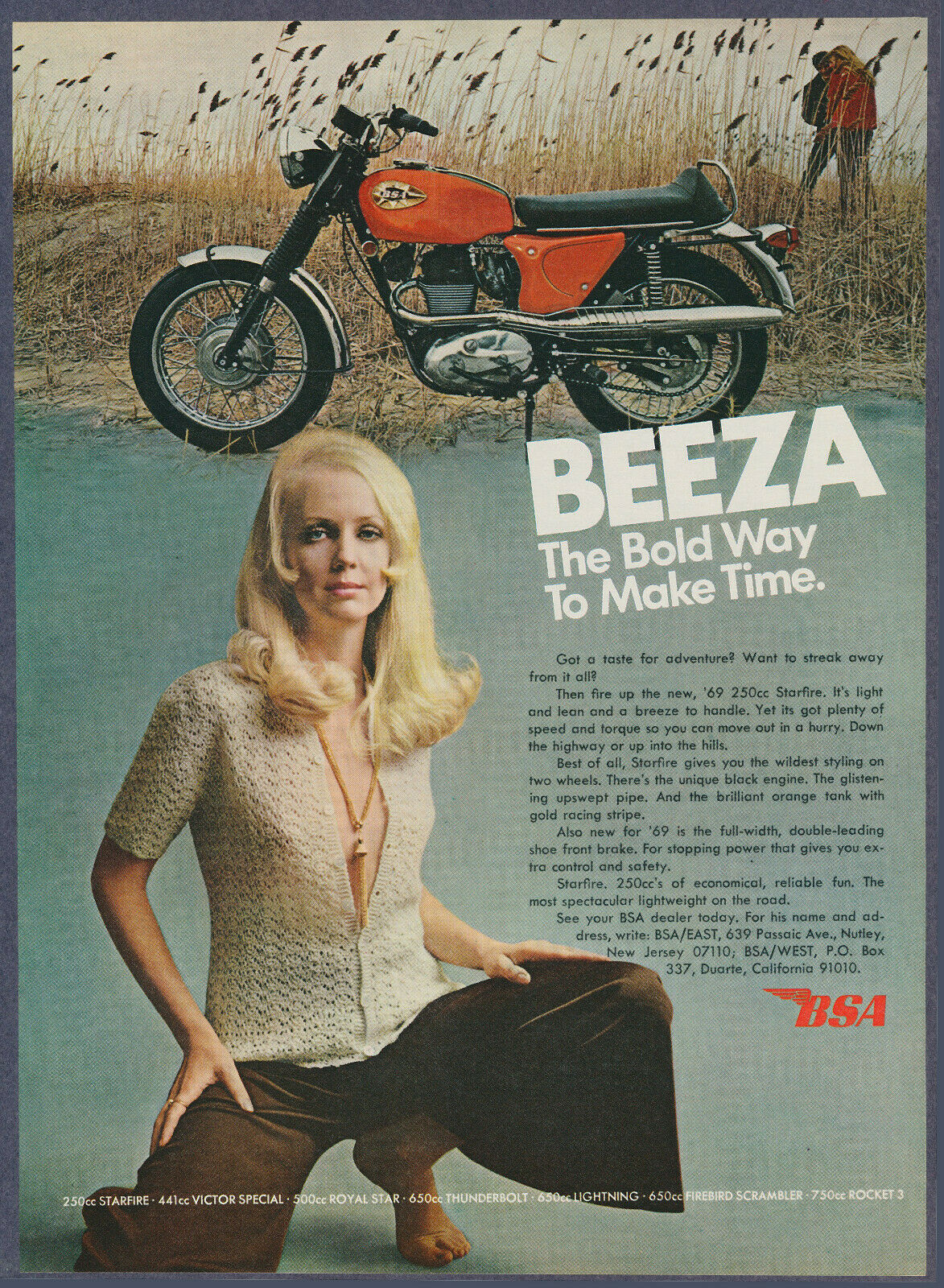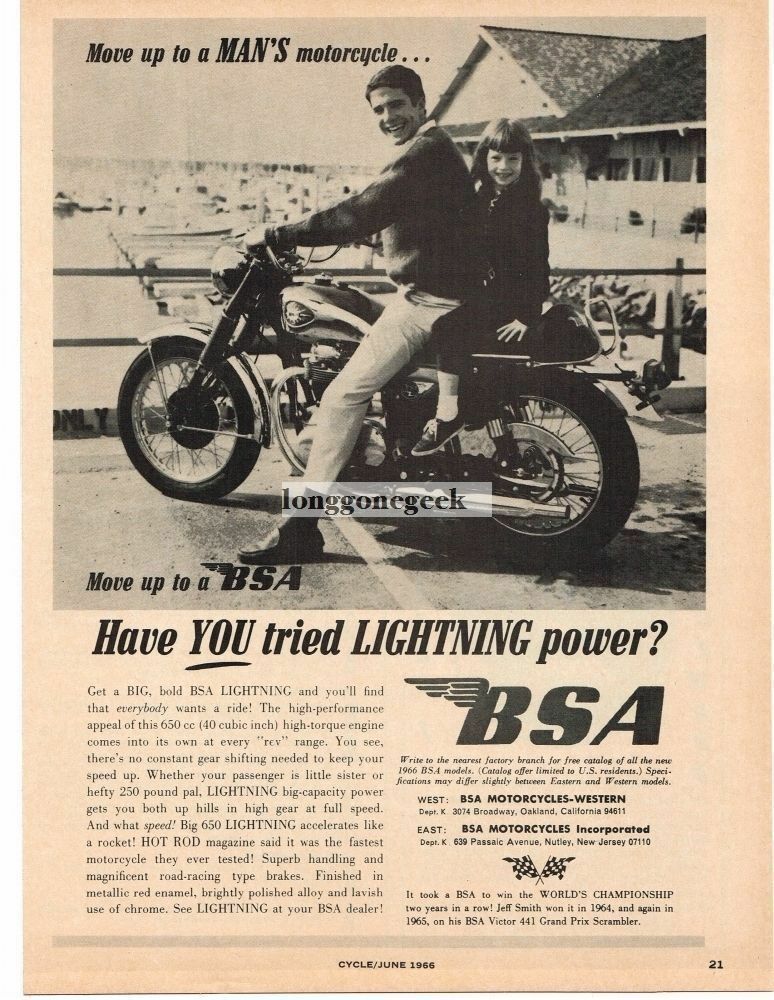-40%
1971 BSA 650 Lightning - 4-Page Vintage Motorcycle Road Test Article
$ 7.89
- Description
- Size Guide
Description
1971 BSA 650 Lightning - 4-Page Vintage Motorcycle Road Test ArticleOriginal, Vintage Magazine article
Page Size: Approx. 8" x 11" (21 cm x 28 cm) each page
Condition: Good
Doth The New Look
A New Motorcycle Make?
THE STYLISTS SPARED nothing in updating the exter-
nal appearance of BSA’s new line of 650s. The new
Lightning, counterpart to Triumph’s new Bonneville, looks
much better than the Bonneville.
Normally, styling would be of small concern to a person
who would buy a British Twin. But performance of the two
machines is virtually identical, and both the Bonnie and the
Lightning share the same new frame design and running gear.
So the BSA gets the better looks. It’s all part of a plot to
revive the sagging BSA line in the U.S. BSA stands for the
initials of the parent company of Triumph and BSA, Birming-
ham Small Arms. We can surmise that in their eyes it’s no good
to have Triumph outselling the namesake of the parent, right?
Whatever the motivation, the treatment is quite attractive.
Since time immemorial, the frame tubes on British machines
have been painted black, and still are so on the Triumphs. BSA
has now switched to ivory painted frames, which has the effect
of attractively emphasizing and outlining that function of the
machine and setting it off from the engine and other parts. By
comparison, a black frame seems to hide itself and disappear in
the jumble of other mechanical parts which make up a
motorcycle.
As with the Triumph Twins, the Lightning frame is new,
better in some ways, annoying in others. Its main structural
member is a large diameter, L-shaped spine tube. The rearward
portion of this tube doubles as the oil tank. This offers a few
advantages: elimination of the need to mount an external oil
reservoir, and increased surface area of the oil container tube,
which gives more effective heat dissipation. The oil filler cap is
located on the bend of the spine frame; it is quickly reached
by unsnapping the seat fastener with the thumb and raising the
hinged seat. However, if the oil level is slightly down, it takes
some careful peeking in that dark, small hole to see how far
down it is. Perhaps a flexible dipstick, to follow the curve of
the spine, is in order.
The other disadvantage is produced by a combination of
styling considerations and the generous thickness of the spine
just behind the steering head. BSA, tiring of the classic Beeza
look, wanted to make their Twins slimmer and sexier, which
they did-admirably. This, of course, means slinging a nar-
rower, lower fuel tank over that fat spine tube. To make the
deep metallic orange and white tank even more beautitul, they
have ornamented it with what we can call a “masculinity”
band running the length of the topside. The slim top of the
tank and that metal band (which may be useful in that it
prevents objects strapped to the tank from scratching the
paint) conspire to demand a centerline gas cap location. Open
the cap and what do you see? Gasoline, if the lank is full. Or,
the hump of the spine tube, if the gas tank is less than three
quarters full. So you peek around the side of the filler hole, or
shake the bike sideways to hear how much gas is sloshing
about. One of us ran out of gas while developing his ear for
sloshing.
In a way, these impracticalities are delightful. After all, the
bike is beautiful and more compact looking. And a little
frivolity can't hurt jolly old BSA, nor us BSA riders, who are a
frivolous lot anyway.
On the practical side, the large spine tube frame, in
combination with a full double cradle, is hard to fault, as it is
quite strong and flex-free. The BSA/Triumph design also
dispatches one common objection with frames that carry oil
which has to do with contamination of the oil reservoir with
metal bits, should an engine blow. The bottom end of the
BSA’s spine has a removable cap, so the reservoir may be easily
emptied and flushed. Further protection comes in the form of
an inverted basket screen which strains the oil as it enters the
reservoir from the engine.
Along with the new frame comes the new forks and conical
hub assemblies which grace the Triumph 650s. These provide a
vastly improved ride over the old BSA Twins. The ride is
stiffer, but the reward is a lighter feeling, and a more stable
machine, nimble in town and encouraging derring-do in the
swerving outback. The Lightning may be stuffed hard into a
turn until everything grounds (more so on the left, because of
the projecting centerstand). The 3.25-19 front tire, smaller
than last year’s front, allows great steering precision. Point the
bike and it stays pointed. The bike is definitely one of the best
handling big Twins we have tested, and certainly the best to
come from BSA in a long time.
BSA’s powerplant, one of the few things left to help you
tell Trumpet and Beeza 650s apart (assuming you are
colorblind), is much the same as in recent years: a slightly
oversquare (75mm by 74mm), pushrod vertical Twin with
9.0:1 compression ratio. Even in dual-carb Lightning trim, it is
in moderate tune, and therefore offers a fairly broad power-
band, docile low-speed running, and easy starting. This is
somewhat of a retreat for BSA, who were pushing a faster 650
called the Spitfire a few years back. Now that they have the
750-cc Three, the Lightning takes over as head Twin—one that
is much easier to live with.
Modifications to the engine for 1971 are few, save for the
incorporation of the cylinder head steady into the rocker box
casting, and the adoption of megaphone-shaped silencers,
which not only look good, but really do a proper job of public
relations while retaining enough deep timbre to allow the rider
to feel like he is riding a ballsy machine.
The generous amount of mechanical noise revealed, perhaps
because the silencers are more effective than in past years, is
disappointing. It is most evident in the form of whirring and
clanking from the lower regions, particularly with little or no
load on the engine. The effect was similar, though not as
pronounced, on the Bonneville, which has improved silencing,
too. The BSA engine also vibrates at some rather unstrategic
points in the rpm scale, notably at 3500 rpm to 4000 rpm.
Unstrategic, we say, because these rpm figures correspond
roughly to speeds in high gear of 55 to 65 mph. Above 4500.
the vibration, which tickles feet and hands, starts to disappear.
We don’t recall that the same engine vibrated as much in
preceding years, which would suggest that the frame tube
thickness or the frame mounting points are “unsympathetic”
to the engine. Sometimes the engine balance factor must be
changed for a new frame. While BSA is figuring out what it is,
the long distance touring rider can solve the problem some-
what by gearing higher overall.The Lightning is certainly
capable of pulling higher gear. Handlebar jiggles, not as
noticeable as those that set the feet to tingling on long freeway
runs, could be reduced with narrower bars.
At any rate, one may well notice that the most popular big
Twins are set up for the American market as around-town hot
rods. Wide bars, low gearing, etc. Go to a country in Europe or
the British Isles where big Twins are more often used for
travel, and you will find that the bikes are presented to the
buying public in different form.
The Lightning gearset will please some and irritate others.
Unlike the Triumph 650 Twin’s four-speed unit in which the
ratios are more or less evenly spaced, BSA puts a larger gap
between 2nd and 3rd gears, thus making 3rd closer to 4th.
This will infuriate racing types, and immensely please road...
11912-7108-08
window.NREUM||(NREUM={});NREUM.info={"beacon":"bam-cell.nr-data.net","licenseKey":"32933b6325","applicationID":"1067803047","transactionName":"ZgEAMkVZXEVZUEFdXV9LNxReF1ZTS1BHXUJFDQ0IGUhaRg==","queueTime":0,"applicationTime":148,"atts":"SkYDRA1DT0s=","errorBeacon":"bam-cell.nr-data.net","agent":""}

